She Photographed Police Abuse at a 2014 BLM March Then Watched the Image Go Viral During Capitol Riot
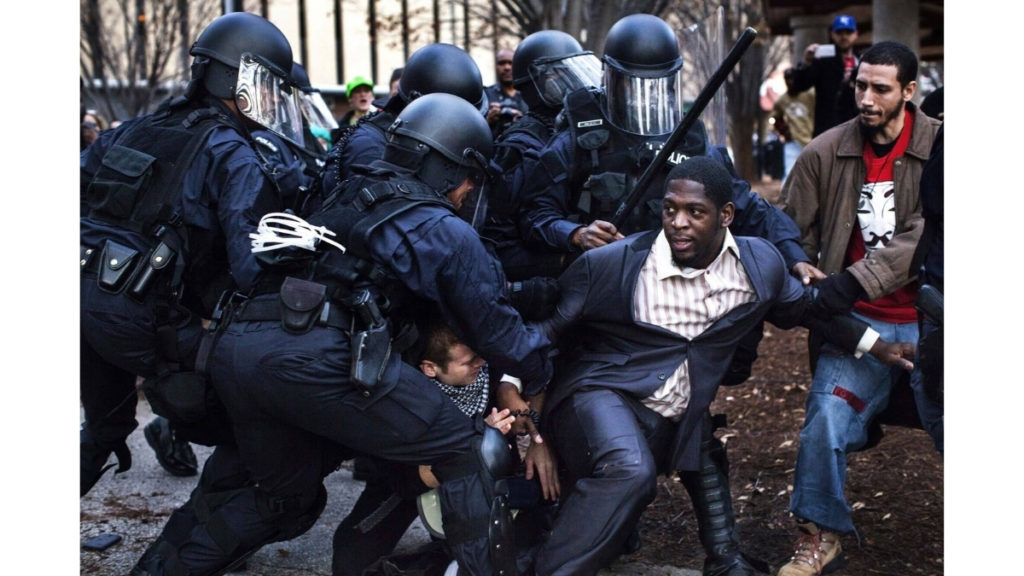
![]()
She Photographed Police Abuse at a 2014 BLM March Then Watched the Image Go Viral During Capitol Riot – In the midst of Wednesday’s assault on the U.S. Capitol, Twitter user @thejuliacarter gave voice to the outrage many felt at the stark difference between what appeared to be the accommodating treatment of the rioters by the Capitol Police and the brutal treatment of peaceful protesters by armor-clad officers in cities like Ferguson, Missouri, and Minneapolis in the past few years.
The tweet included two photos. On the left was a photograph of a Black man being tackled by riot police. It was made by photojournalist Natalie Keyssar at a peaceful Black Lives Matter protest in Ferguson in 2014. On the right was a photograph of several white men, one of whom is carrying a Confederate battle flag, roaming freely around the Capitol. It was made by New York Times staff photographer Erin Schaff. Schaff later told a harrowing story of being trapped in the Capitol as rioters broke in.
The tweet soon went viral, with 188,000 retweets as of Jan. 8.
There are two Americas. pic.twitter.com/CptXMNRLYw
— Julia Carter (@thejuliacarter) January 6, 2021
I’ve been friends with Keyssar for years, and she has done work for ProPublica. I asked for some of her insights about having played a small role in helping articulate America’s reaction to the riots and about revisiting the photo she took years ago in a new context. What follows is a conversation we had over email, lightly edited for clarity and length.
You took the photo on the left when you were covering the protests in response to the Ferguson grand jury’s decision not to prosecute Officer Darren Wilson for the killing of Michael Brown, a Black 18-year-old. What was the scene and moment like where you shot the photo?
This was six years ago now, but what stands out in my head really distinctly was that as this peaceful group of demonstrators marched through the surrounding blocks near the [St. Louis Rams] stadium led by Bishop Derrick Robinson and several other important community leaders, I could see that it was about to get ugly. The police were being extremely aggressive, which they often were at these demonstrations, but they seemed particularly angry about a protest outside of a football game. The level of tension concerned me. I’ve covered a lot of protests and I feel like I have a good sense of when things are about to get violent, and I started warning some parents with small children that I thought the police were going to attack soon. I use that word, attack, deliberately because this was not a situation where a group of militant protesters are pushing against a police line. We are talking about peaceful families chanting and marching on public streets.
Eventually the police pushed the relatively small group of remaining protesters into a public park across the street from the stadium. Robinson was speaking into the megaphone, and the police just started charging people and tackling them to the ground. I remember one of them hit me while photographing as maybe four police in riot gear threw a teenage girl, maybe 90 pounds, to the ground. She was screaming. Then they went for the pastor. He was not struggling in this image, just trying to keep his balance. He broke no law. He did not fight them. It was a profoundly disturbing scene.
I know that, like many photojournalists, you’re concerned about the ways in which photographs can oversimplify and how they can objectify Black suffering, so I’m curious how you felt when you saw the juxtaposition of your photo next to the rioters who stormed the Capitol.
When I saw this juxtaposition pop up on my timeline I was kind of shocked because this moment in St. Louis is burned into my memory, and I was still processing this attack on the Capitol. My response was that this pairing represents the rage and sadness I feel, seeing a white mob storm the Capitol with very little resistance from law enforcement, in a country where people of color are frequently subject to harsh punishment and extrajudicial killing for no transgression at all.
The problem with still images is that they are, almost by nature, simplifications. And the history of photography is inextricably weaved in with the history of exploitation, colonialism and the aestheticization of the suffering of Black, brown and poor people. I try very hard with my work to never fall into repeating these errors, although as a white photographer I am certain that I have and am constantly working to learn and do better. I think one of my most important metrics of whether an image is the objectification of suffering, or the necessary documentation of injustice, is that the perpetrators are represented, that the harm is contextualized, that the image serves to document wrongdoing by those in power, and I hope that it is true that this image does that.
I think my image functions as an important record of wrongdoing, and an undeniable proof of police abuse toward black activists. And this juxtaposition serves to enhance that message. I also saw today that Pastor Robinson posted this image pairing on his own Facebook page, which indicated that he approves of this usage, which is very important to me. This image has popped up in other comparative contexts, but this is by far the most visible this photo has ever been.
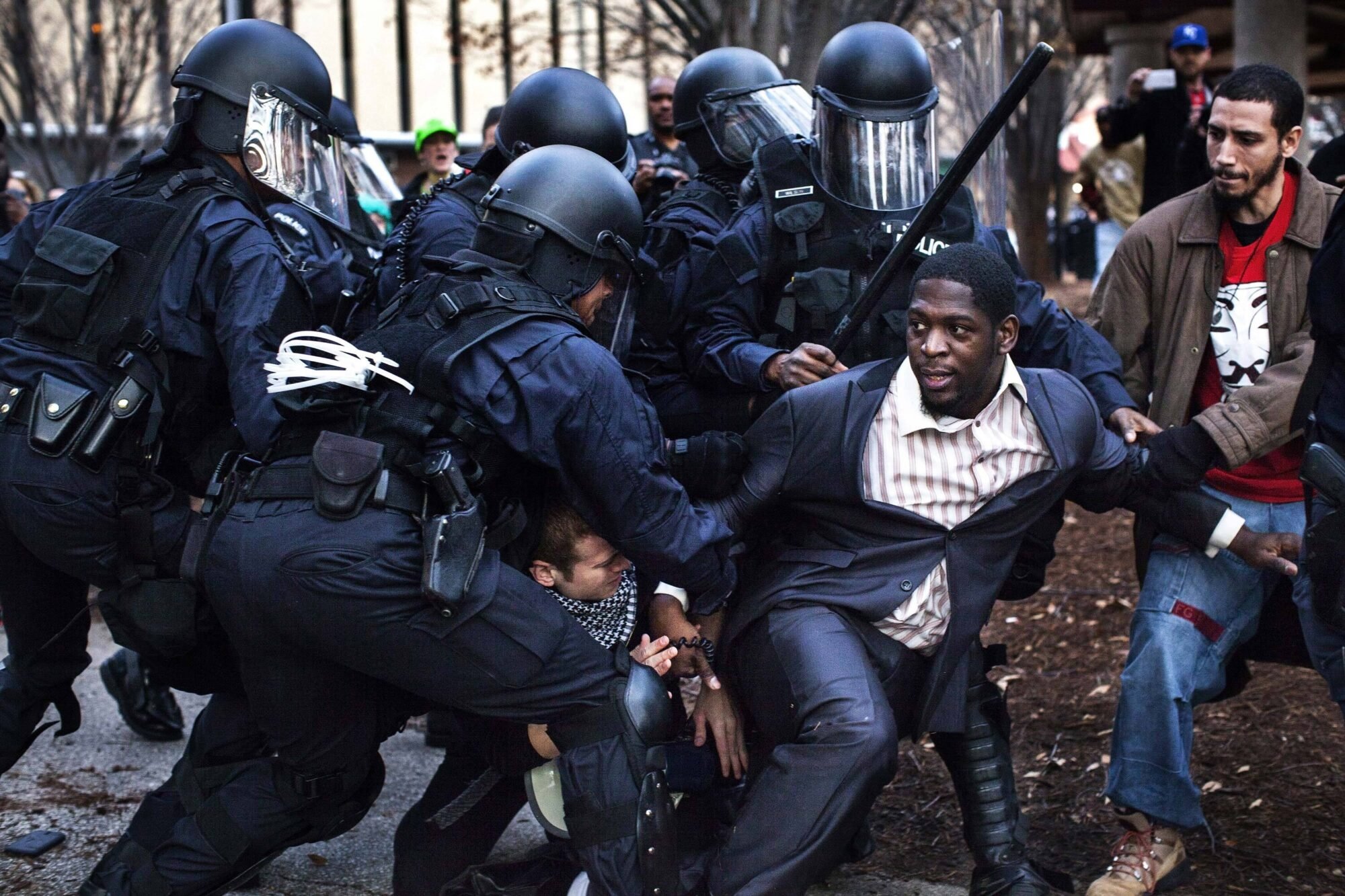
Your name isn’t on the Ferguson image in the tweet, but it’s not hard to figure out that you’re the photographer. Have you gotten any reactions to this, other than from your colleagues?
The vast majority of the reactions I’ve seen have just been people retweeting and amplifying the diptych and the message it conveys. Other than a few inquiries from within the industry, the vast majority of people interacting with these images are far more interested in the disparity they convey and the events of Wednesday than they are in me as the photographer.
I’ve also seen comments about how this pairing is “cherry-picked” or taken out of context, a commentary which I disagree with vehemently, but it’s interesting to see the way people see what aligns with their beliefs.
There’s an inherent reduction of context on social media. There are no two ways about this; and I hope this image particularly does have a lot of symbols embedded in it. I saw the entire scene [in St. Louis] unfold, and this attack seemed completely unjustified. This is a peacefully protesting man of the cloth. Not that being a clergyman automatically conveys blanket innocence, but who is safe if not this person?
Because of the racist history of this country, you could find thousands of other images of unimpeachable behavior being punished violently, but I was struck that this photo had been chosen by whoever made this diptych, because its full context has so much specific relevance in comparison to the events of Wednesday.
So far this image has been favorited 461,000 times, and retweeted 188,000 times, on Twitter. Are you surprised by that? How does that virality, and the emotion that likely fuels it, change the way you think about the impact of your work?
Seeing a picture go viral is almost like watching it become property of the collective consciousness; it takes on its own meaning and power. I was thinking yesterday about the words “my picture” and what that meant because in many ways although I am the author, this is really Bishop Robinson’s picture if it’s anyone’s. It’s very complicated, the concept of authorship when you’re documenting people’s lives during very difficult moments.
I also think about the power of virality to transport something outside of the somewhat limited world of journalism and those who consume it to much farther reaching audiences. I mean this pairing and the words “There are two Americas” is really almost a meme right? Except it is not funny in any way. Usually memes are the language of comedy and incredibly widely consumed, and this is a powerful and necessary conduit for information. Journalism and art are often consumed by a relatively small audience. Though social media has its drawbacks, it enables these products and concepts to reach a wider audience.
The meme-ification of an image like this can bring attention to a breaking historical event to people who aren’t necessarily paying attention to news and analysis. They might see this pairing, and the four words, and come to some interaction with the same concepts. It’s putting the events of yesterday in an easy to share context.
How has the recontextualization of your image, taken so long ago, changed its meaning for you?
When I think back on when I made this image, it was just a few months after the Black Lives Matter movement became part of the national conversation after the killing of Brown. Six years later, seeing this image in this context, you can see that little if anything has changed in terms of the brutal treatment of Black and brown people at the hands of the police.
One of the stories that has been somewhat drowned out by Wednesday’s events is that the police [in Kenosha, Wisconsin] who shot Jacob Blake and paralyzed him were also not charged with anything. Meanwhile, as we know, there has been a massive rise in the visibility and activity of radical right-wing white supremacist extremists. One hopes, when documenting movements for social justice, that one is covering a process towards progress, that six years later this image would be more shocking because maybe some reforms would be in place to make this scene not one of so many like it that we’ve seen this year. But on the contrary, it’s part of a growing canon of photographs of these types of abuses. Seeing this picture paired with Erin Schaff’s image from yesterday raises questions for me about what the next in the sequence years from now will be. Will we be looking back on these times talking about how dark a chapter in our history this was? Or will we be shaking our heads, much as we are now, saying if we only knew then what these next years would bring?
She Photographed Police Abuse at a 2014 BLM March Then Watched the Image Go Viral During Capitol Riot



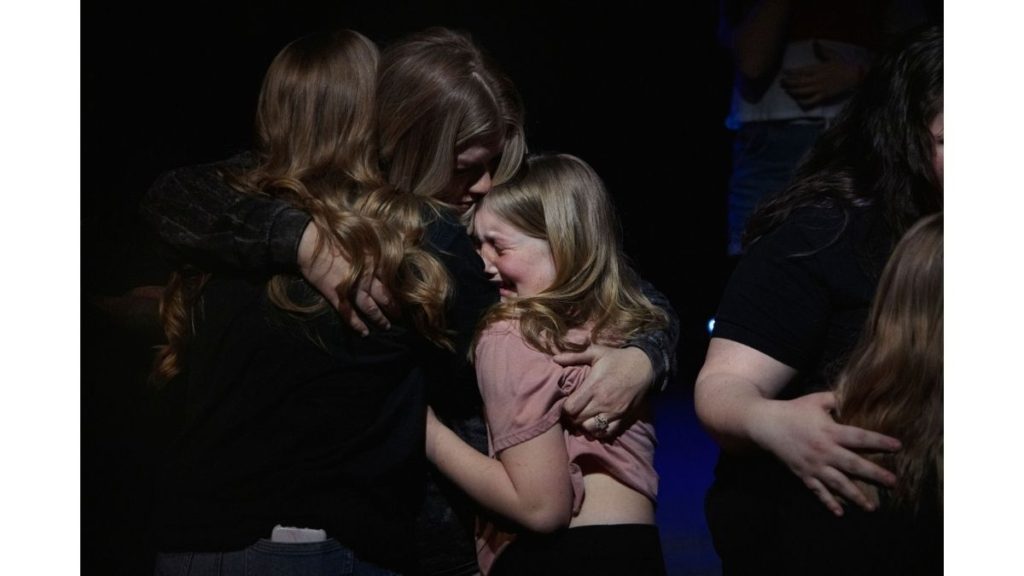
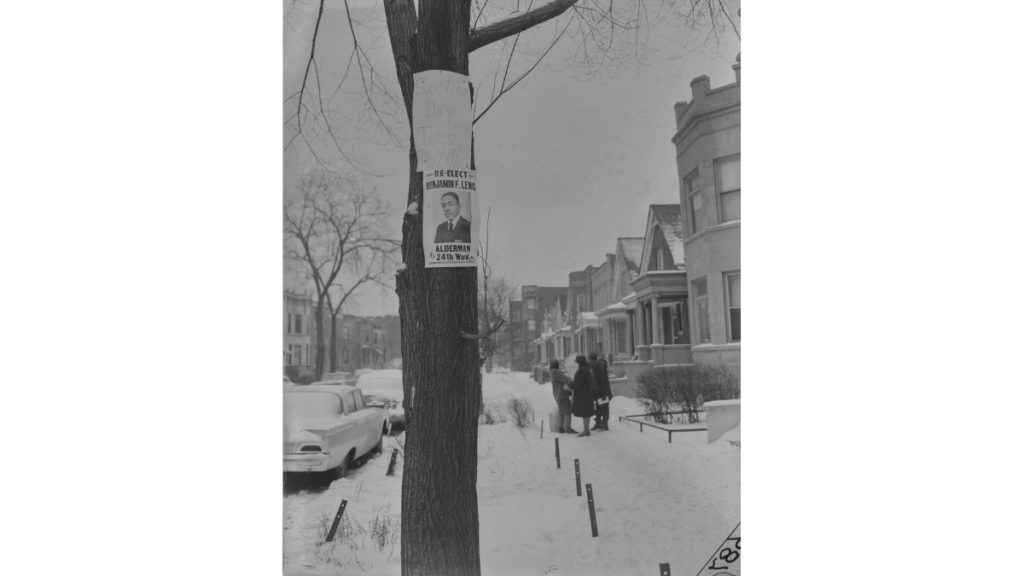
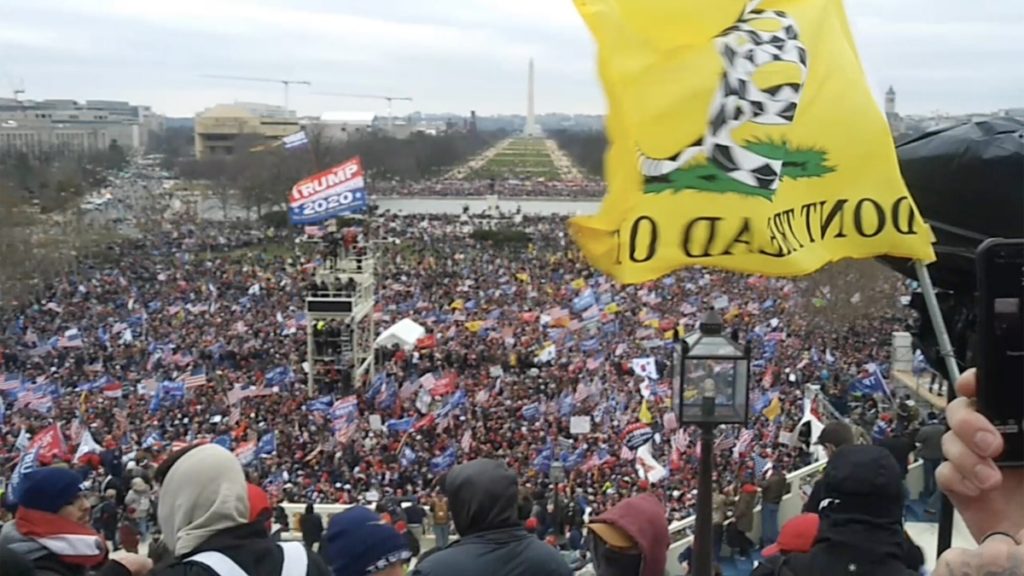
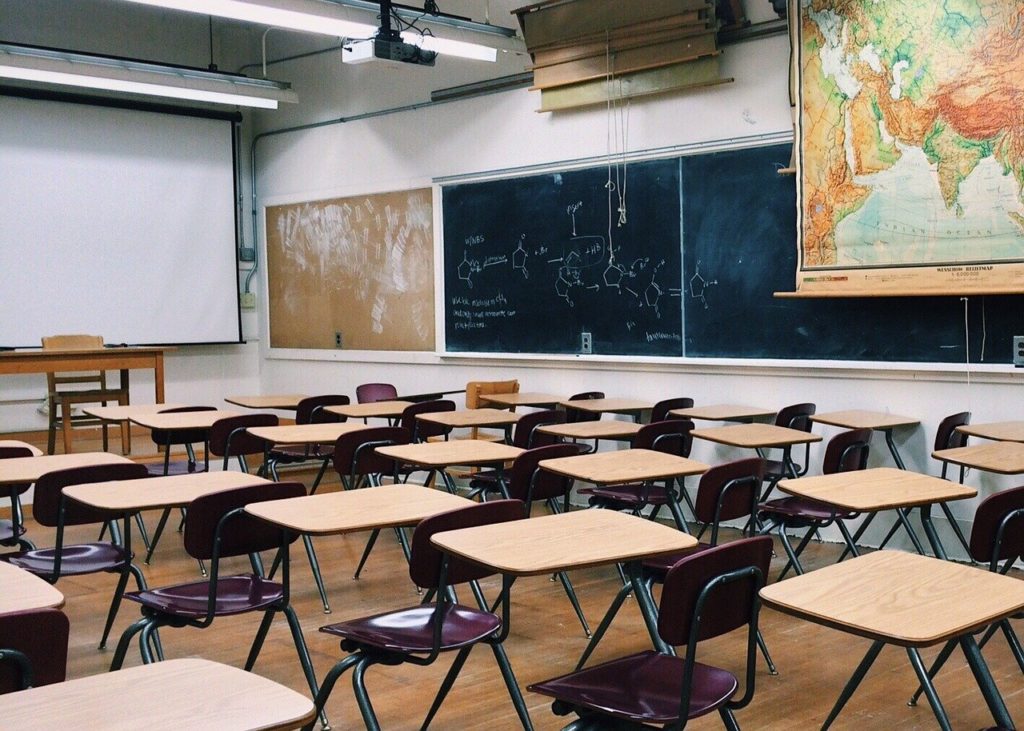
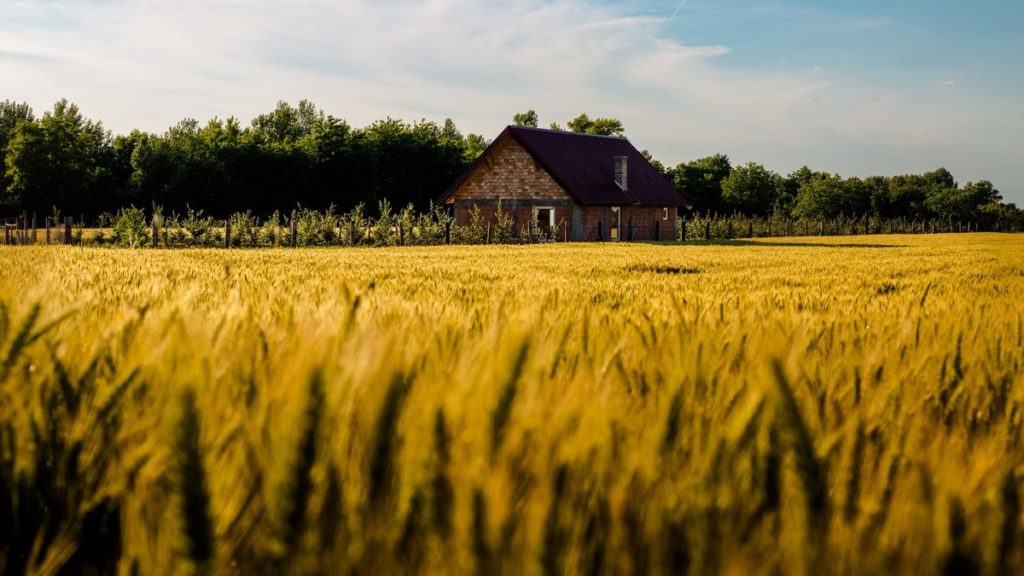
Responses